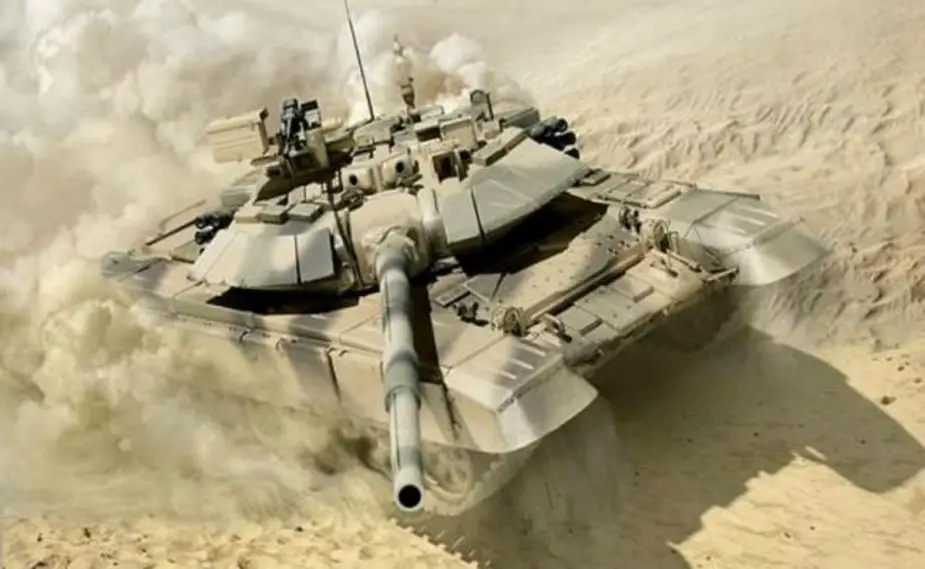Breaking news
Indian T-72A and T-90M tanks Maneuvers along Chinese Border in Ladakh Valley.
In the context of the territorial dispute between India and China over sovereignty in Ladakh, India has announced the deployment of its T-72 Ajeya and T-90 Bhishma tanks in the region. These formidable battle tanks have recently been used in training exercises in the vast open valleys of eastern Ladakh, demonstrating India's commitment to enhancing its military presence in the area.
Follow Army Recognition on Google News at this link

As part of a military exercise, Indian army announced the deployment of its T72 Ajeya and T90 Bhishma in the Ladakh valley. (Picture source Prabhat Khabar News)
The Sino-Indian border conflict, which began on May 5, 2020, has witnessed violent clashes along the Line of Actual Control (LAC), including near Pangong Lake in Ladakh, the Tibet Autonomous Region, and the border between Sikkim and the Tibet Autonomous Region. Skirmishes and face-offs have also taken place in eastern Ladakh.
Tensions escalated in June 2020 when violent clashes resulted in casualties on both the Indian and Chinese sides. Since then, efforts have been made for disengagement, with partial withdrawals from certain disputed areas. However, the ongoing troop reinforcements on both sides indicate the persistence of tensions in the region.
The recent training exercises involving the T-72/T-90 tanks demonstrate India's determination to strengthen its position in the disputed region of Ladakh. These main battle tanks, equipped with their firepower and mobility, enable India to be prepared for any eventualities and safeguard its interests in the region.
The T-72A and T-90M tanks are the main battle tanks that provide increased firepower and protection. The T-72A serves as the backbone of the Indian armored forces, with 2,418 units out of the total 3,690 tanks, highlighting its significant presence and importance. They are particularly well-suited for battles in open terrain, making them strategic assets in the contested region of Ladakh. The recent exercises have allowed Indian units to refine their techniques for crossing the Indus River, which runs through Ladakh from Tibet under Chinese control.
These training exercises aim to prepare the Indian Army to counter any attempts by Chinese forces to seize Indian territories by crossing the river valleys of Ladakh. The T-72 and T-90 tanks, transported extensively to the region by Il-76 and C-17 military transport aircraft, are now ready to thwart any enemy incursions.
Additionally, as previously reported by Army Recognition editorial team on October 25, 2021, the Indian Army has also deployed the Pinaka and Smerch multiple rocket launcher systems at advanced positions near the Chinese border. The domestically developed Pinaka system has a maximum range of 40 to 60 km, while the Soviet-origin Smerch system can reach up to 90 km. These multiple rocket launcher systems significantly enhance India's capability to swiftly and effectively respond to any threats from the Chinese border.
Furthermore, as recently reported by Army Recognition editorial team on July 07, 2023, India has undertaken the development of tanks specifically adapted to mountainous conditions. These tanks will be better suited for operations in mountainous terrain, prioritizing speed and maneuverability over armor and firepower.
The situation remains tense, with ongoing diplomatic efforts and dialogue mechanisms between India and China aimed at peacefully resolving the border dispute. However, the recent military deployments and intensive training underscore India's firm commitment to defend its sovereignty in the contested region of Ladakh. The international community calls for calm and a peaceful resolution of the dispute to avoid any dangerous escalation in the region.


























